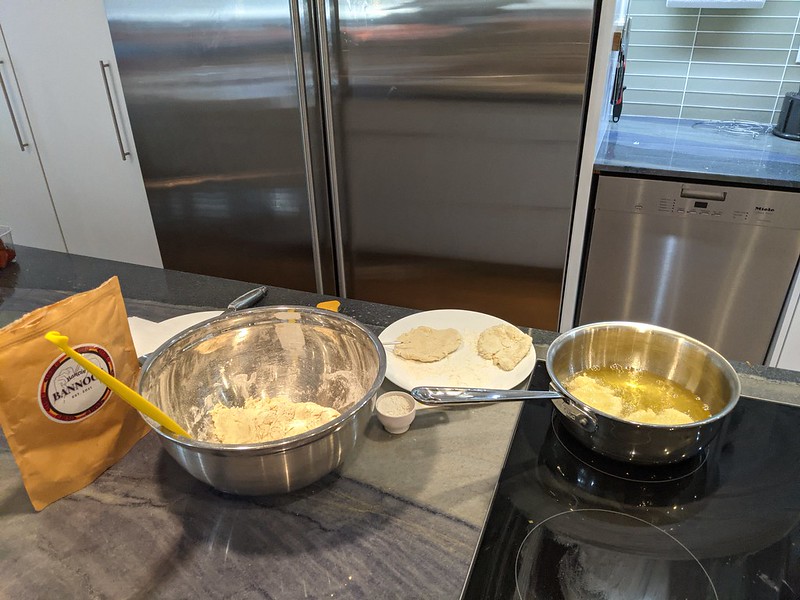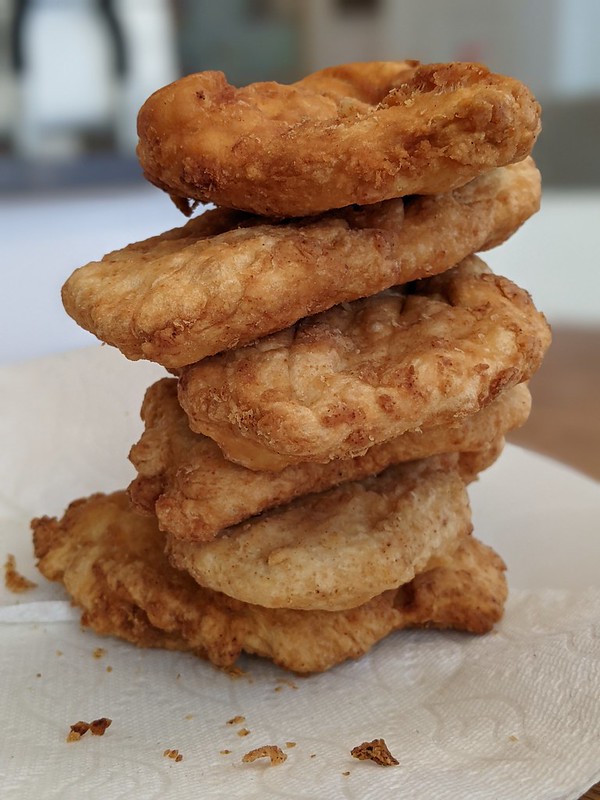Bannock
June is National Indigenous History Month in Canada. One of the events that our indigenous employee resource group put on was a bannock cook-along in partnership with Bangin’ Bannock. On the day of the event, Canada Post delivered a packet of bannock mix just in time for me to watch the event live.
Since fried foods are best eaten right away, and we already had dinner plans, I didn’t make the bannock with the rest of the group. But I did get some useful tips: don’t over mix the dough, bannock can be the base of a “taco” or be eaten drizzled with maple syrup or cinnamon sugar, and you can also bake bannock.
The next morning, I got up a bit early, and poured a cup of water into the mix, then made the dough. I probably wasn’t paying enough attention to the livestream, nor the tips, as my dough rounds weren’t very sticky, and turned out a little dense and chewy.
Frying them was easy though: about an inch of oil in the bottom of a large pot is all you need. I was able to fit two pieces in at once, and once the temperature of the oil had stabilized, I was able to finish frying each pair in about 5 minutes or so. As the bread was frying, I shaped and dusted the next two.
Here’s the finished bannock, stacked high! As expected, warm, fried dough is delicious. The mix has just a touch of sugar to make it sweeter than plain bread, but not nearly as sweet or rich as a raised doughnut. My kids had some with cinnamon sugar, and I also opted to put some cloudberry compote on mine.
This was my first time making bannock (also known as fry bread in some parts of Canada), and I was surprised by how easy it was. Unlike a yeasted bread, which requires time to rise, the bannock is leavened with baking powder.




Leave a comment